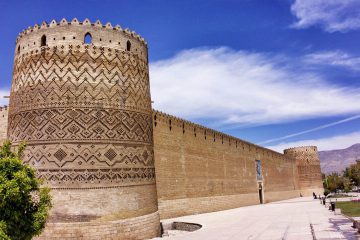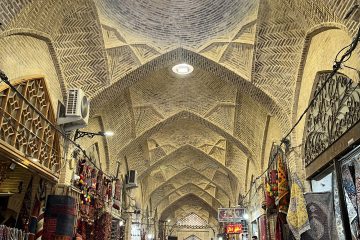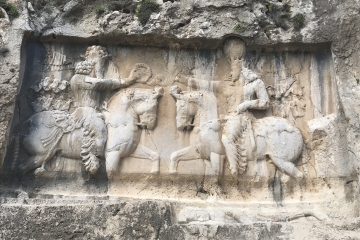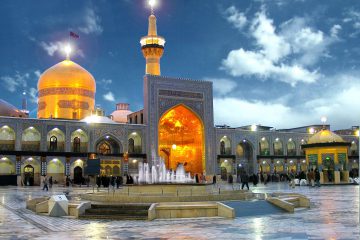
Isfahan Historical bazaar
Welcome to Isfahan Grand Bazaar, a vibrant market that takes you back in time to experience Persia’s soul. With its labyrinthine alleys, bustling shops, and historic architecture, this bazaar is not just a shopping destination but a cultural treasure. It attracts visitors from around the world.
As you step foot into the bazaar, you’ll be enchanted by the scent of exotic spices, the ornate craftsmanship of Persian carpets, and the colorful displays of traditional handicrafts. This bustling marketplace has been a center of commerce and culture for centuries, reflecting Isfahan’s rich history and heritage.
Wander through narrow passages. You’ll stumble upon hidden gems like traditional teahouses where locals gather to share stories and sip fragrant tea. Marvel at the grandeur of the Imam Mosque, a masterpiece of Islamic architecture. Immerse yourself in the vibrant atmosphere of Naqsh-e Jahan Square, a UNESCO World Heritage site adjacent to the bazaar.
Whether you’re seeking exquisite handmade souvenirs or soaking in authentic Persian ambiance, Isfahan Grand Bazaar is a must-visit destination. Discover the magic of this historical gem and let it transport you to a bygone era.
History of Isfahan Grand Bazaar
Qeysarriyeh Bazaar has a storied past of over a thousand years. It was established during the Seljuk dynasty in the 11th century and flourished under the Safavid dynasty in the 17th century. The bazaar served as a vital trading hub on the Silk Road, connecting the East to the West. It facilitated the exchange of goods, ideas, and cultures.
Over the centuries, the bazaar has witnessed significant historical events and witnessed the rise and fall of empires. It played a pivotal role during Shah Abbas I’s reign, who transformed Isfahan into a magnificent capital city. The bazaar’s architecture and layout underwent several renovations during this period, with new caravanserais, mosques, and bathhouses added.
Esfahan Daily Tours
Architecture and Layout of the Bazaar
Isfahan Grand Bazaar’s architecture is a testament to Persian craftsmen’s skill and artistry. The bazaar is a maze of interconnected alleys, each leading to a different section specializing in a particular trade. The layout is designed to create an immersive experience, where visitors can get lost in its enchanting atmosphere.
One of the highlights of the bazaar is the Imam Mosque, located in the heart of the market. Its majestic dome and intricate tilework make it a true masterpiece of Islamic architecture. The mosque serves as a visual anchor, guiding visitors through the bazaar’s maze-like structure.
Another architectural marvel is the Qeysarieh Portal, the main bazaar entrance. This grand gateway welcomes visitors with its impressive arches and calligraphic inscriptions, setting the stage for the treasures within. Exploring the bazaar, you’ll find stunning courtyards, vaulted ceilings, and hidden nooks that add to its charm.
Famous Shops and Products in Isfahan Grand Bazaar
Isfahan’s Grand Bazaar is home to a myriad of shops, each offering unique products that showcase local artisans’ craftsmanship and talent.
For those interested in traditional Persian handicrafts, the Qeysarieh Bazaar is a must-visit. Here, you’ll find shops specializing in miniature paintings, calligraphy, metalwork, and pottery. These intricate pieces make perfect souvenirs, allowing you to take Persian culture home.
When entering the bazaar, you will see the main and sub-passages of the market, which is a long route, and there are shops on both sides of it. Albeit we mentioned that the Qeysarie Bazaar is the finest place to buy Persian rugs, this historical market also provides other goods that you may find useful, such as:
Cashmere: the house of Calico
Copperware and Toreutics: the copper market is on the west side of Naghshe Jahan Square and north of Ali Qapu Palace
Stone ornaments, antiques, miniatures: Kayserieh Bazaar, Chitsazaha Square, Naqsh-e Jahan Square
Gold and jewelry:
Carpet: Rangarzah Bazaar and the New East Bazaar
Clothing: Masoudiya Bazaar, between Hakim Mosque and Sadr School and Haruniya Bazaar
Porcelain and crystals:
Persian Gaz and Poolaki and other sweets: these shops are scattered throughout the bazaar
Other tourist attractions at the Grand Bazaar of Isfahan are the houses for dining or drinking. Up to this day, the bazaar’s food has always been praised by travelers. Colorful and glazed Persian dishes will not disappoint you, but rather create a memorable experience. Here is a list of some of the most famous cafes and restaurants and their locations in Isfahan Bazaar. These are places where you can enjoy Persian cuisine during your visit.
Narun Cafe: Qaisarieh Bazaar
Dizzy Serai Bazaar: The New East Market
Half of the World Restaurant: Chitsazaha Bazaar
Jarchi Bashi Restaurant: North of Hakim Mosque
Haj Mahmoud Shafaat Biryani: Elkhebal Bazaar, next to Sheikh Bahai Bath House
Isfahan: The city of Art
Cultural Significance of Isfahan Grand Bazaar
Isfahan’s Grand Bazaar is more than just a marketplace; it is a living testament to Iran’s cultural heritage. The bazaar has been a meeting place for people from different walks of life, fostering a sense of community and cultural exchange. It is a space where traditions are preserved and celebrated, and where the past seamlessly blends with the present.
The bazaar also plays a significant role in the local economy, supporting countless artisans and small businesses. It serves as a platform for traditional craftsmanship to thrive, ensuring skills are passed down to future generations. By supporting the bazaar, visitors contribute to the preservation of Isfahan’s cultural heritage.
Tips for Exploring Isfahan’s Grand Bazaar
To make the most of your visit to Isfahan’s Grand Bazaar, here are some tips to remember:
1. Wear comfortable shoes: The bazaar is vast, and you’ll be walking a lot. Wear comfortable shoes to ensure a pleasant experience.
2. Bargain with respect: Bargaining is common in the bazaar, but remember to negotiate respectfully. It’s a chance to interact with shopkeepers and learn about their craft.
3. Explore the hidden passages: Don’t be afraid to venture off the main path and discover the hidden corners of the bazaar. You never know what treasures you might find.
4. Try the local cuisine: The bazaar is not just a shopping destination; it’s also a culinary delight. Sample traditional Persian dishes at local eateries and savor Iran’s flavors.
Hidden Gems and Must-Visit Places in Isfahan’s Bazaar
While exploring Isfahan’s Historical Bazaar, seek out these hidden gems:
1. Ali Mosque: Tucked away in a quiet corner of the bazaar, Ali Mosque is a serene place of worship adorned with intricate tilework and calligraphy. It offers a peaceful respite from the bustling market.
2. Traditional teahouses: Take a break from your shopping spree and unwind in one of the traditional teahouses in the bazaar. Sip fragrant Persian tea and talk to the locals.
3. Chehel Sotoun Palace: Located just outside the bazaar, Chehel Sotoun Palace is a stunning example of Persian architecture. Admire the mirrored halls and beautiful frescoes that depict Iranian history scenes.
Isfahan Travel Guide, Capital Of Art!
Local Cuisine and Delicacies in Isfahan Bazaar
Isfahan’s Historical Bazaar is a paradise for food lovers, offering a wide array of delicious treats. Indulge in the famous Gaz, a nougat made with pistachios and rosewater, or try Sohan, a saffron-flavored brittle. Don’t miss out on aromatic spices and dried fruits staples of Persian cuisine.
For a more substantial meal, head to the bazaar’s food stalls and sample traditional dishes like Chelo Kabab, a skewered meat dish served with saffron rice. In addition, sample Ghormeh Sabzi, a herb and meat stew. These culinary delights will leave you craving more.
Shopping Etiquette and Bargaining Tips in Isfahan Bazaar
When shopping at Isfahan’s Historical Bazaar, it’s imperative to remember local customs and etiquette. Here are some tips to help you navigate the shopping experience:
1. Bargain respectfully: Bargaining is expected at the bazaar, but remember to negotiate respectfully. Start by offering a lower price and negotiating from there.
2. Take your time: Don’t rush your shopping experience. Shop around, ask questions, and learn about the products in the shops.
3. Support local artisans: When purchasing souvenirs, opt for handmade products crafted by local artisans. By doing so, you support their livelihoods and preserve traditional craftsmanship.
Conclusion: Preserving and Appreciating Isfahan’s Historical Bazaar
Isfahan’s Historical Bazaar is a treasure trove of history, culture, and craftsmanship. It is a place where time stands still, allowing visitors to immerse themselves in Persia’s soul. By exploring this vibrant marketplace, supporting local artisans, and appreciating its cultural significance, we can contribute to the preservation of Iran’s rich heritage for generations to come.
So, the next time you are in Isfahan, make sure to wander through the narrow alleys of the bazaar, let the scent of spices guide you, and let the magic of this historical gem transport you to a bygone era.
Happy exploring!
7 benefits of private tours to Iran






